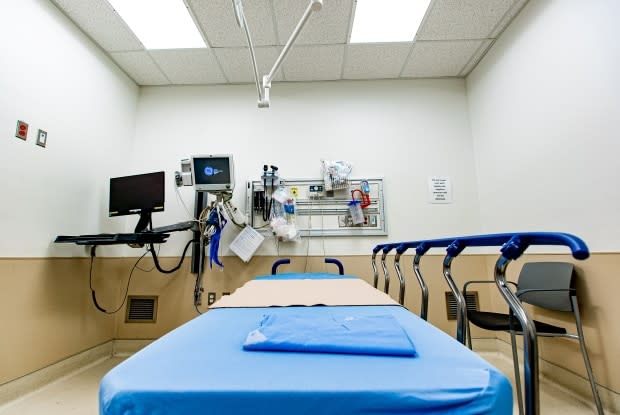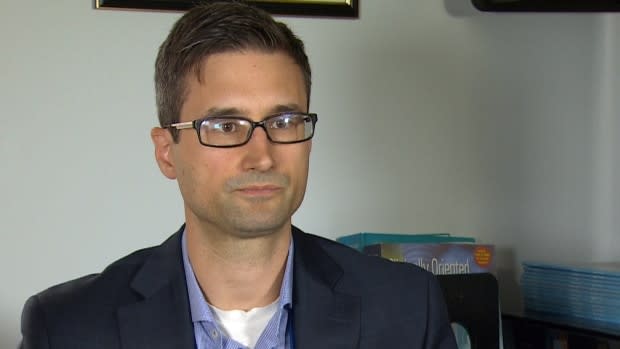Coronavirus in Canada: What are the next steps to contain the disease here?

Canada's second presumptive case of coronavirus has been identified.
On Monday morning, health officials announced the wife of a man who had travelled to Wuhan in China and was being treated at Toronto's Sunnybrook Health Sciences Centre is presumed to have the virus.
"Since arriving in Toronto with her husband, this individual has been in self-isolation," said a statement issued by Dr. David Williams, Ontario's chief medical officer of health.
"We are working alongside Toronto Public Health, who has been in regular contact with the individual during their self-isolation period," said Williams. "Given the fact that she has been in self-isolation, the risk to Ontarians remains low."
The first patient, announced on Saturday and who has since been confirmed to have the virus, is a man in his 50s and is currently in stable condition at Sunnybrook.
Watch | The National looks at what is known so far about Canada's 1st presumed coronavirus case:
His wife, whose case remains "presumptive" until test results are confirmed by the National Microbiology lab in Winnipeg, is at home and not in hospital, a provincial health official told CBC News.
"As we understand it, her case isn't as severe as her husband's and isn't in need of hospital care," the official said.
The next steps for Canada's coronavirus patients include two weeks of monitoring in isolation and quarantine for those who've been in close contact with them, infectious disease physicians say.
Dr. Theresa Tam, Canada's chief public health officer, said Monday that when a new virus first emerges, a second sample is sent for testing "so that we can provide quality assurance and standardize those tests."
While standardization is important, she said, "Ontario will act based on their test results. So they're not waiting until the Winnipeg test comes back to actually manage people from a clinical perspective or contact tracing so everything like that happens when Ontario has got that positive."
On Saturday, Tam said the man who became Canada's first case showed mild symptoms on a flight from Guangzhou to Toronto.
Tam said the latest scientific data suggests that people transmit the virus when they're in close contact with others.
"It's really fellow travellers or family members travelling with a patient that are [at the highest risk]," Tam told a news conference on Sunday. Toronto Public Health officials will provide travellers who were within a two-metre radius of the patient on the plane with information.

Tam said airline staff who may have served the man will also be informed.
"What I would like to emphasize is that for other people on the flight, or in the airport or not in close contact with the patient, is that they should not be overly concerned," Tam said.
CBC News spoke to a passenger who said he was on China Southern Airlines flight CZ311, which took off on Tuesday to Toronto from Guangzhou. Despite Tam's reassurance, the passenger from Toronto, who didn't want to be identified because of the stigma associated with the coronavirus, said he was going to self-quarantine on his own initiative for two weeks.
"I am worried," he wrote to CBC News on Chinese microblogging site Weibo. "I am worried for me and my family."
The risk of outbreak in Canada remains low, Tam said in reiterating that if someone has travelled to the affected area in Wuhan and has fever or flu-like symptoms, they should call a doctor.
China's health minister said the transmissibility of the virus "shows signs of increasing."

Dr. Andrew Morris, a professor in the department of medicine at the University of Toronto who studies infectious diseases with a focus on antimicrobial stewardship at Sinai Health System, said he's concerned about how the Canadian public could respond to China's health ministry information on how people might be infectious when not showing symptoms.
In China, officials strive for people to self-quarantine based on exposure to a high-risk place such as the live-animal market in Wuhan or being in close contact with someone known to be infected.
"What they're trying to do [in China] is tell people you can't just go by your symptoms," Morris said. "If you've got an exposure history risk then you may be contagious even though you don't have symptoms. That may be wise especially where the prevalence of the disease is high.
"I don't think it's applicability is there for … many of the other countries in the world, including Canada."
Morris said he's telling family and friends outside of health-care settings in Canada they don't need to do anything differently.

In the U.S., Dr. Nancy Messonnier, director of the Center for Disease Control and Prevention's National Center for Immunization and Respiratory Diseases, said to expect more cases to be reported in the U.S. in the coming days. Like Tam, she described the risk to the public as "low at this time."
"We need to be preparing as if this is a pandemic, but I continue to hope that it is not," Messonnier told reporters.
Dr. Jerome Leis of Sunnybrook said day-to-day business at the hospital continues as normal. "It is not affecting the care we provide for all of our other patients."
Since there are no specific treatments for the virus, currently known in scientific circles as 2019-nCoV, the man will receive supportive care to relieve symptoms, Morris said.

The patient will be kept in isolation until infectious disease physicians consider the risk to the general public negligible, Morris said. Before that, they may conduct virus studies to check that he is no longer contagious.
"He's been rapidly processed, appropriately processed and the degree of risk reduction has really been quite impressive," Morris said.
"If you think of what it's like today compared to how we were 17 years ago with SARS, that change is dramatic and hopefully that's going to substantially reduce the risk to the public."
Paramedics who transported the patient wore protective equipment such as masks.
At the hospital, the patient was put in special isolation in a negative pressure room with a vacuum to suck all of the air out and filter out any infectious particles.
Standard public health protocols include tracing "close contacts" of a patient with the virus, such as those living with the sick person.

In Canada, close contacts are asked to self-isolate at home so public health officials can observe if they get symptoms or not.
According to the CDC, people who have "casual contact," such as going to the same grocery store, "are at minimal risk for developing infection."
Watch | Infectious disease specialist tackles questions on coronavirus:

